Blog Archives
Home -
Posts tagged "animal rights" (Page 4)
Among the saddest and most cruel forms of torture animals humans have inflicted on animals is Bear Bile Farming. Bear Bile is used in traditional Chinese medicine. The process of extraction involves starving and dehydrating bears and extracting the bile through catheters and needles inserted into the gallbladder. Worse still, the bears are captured and confined to produce bear bile for the duration of their lives. This could mean up to 30 years of torture.
In the past, bears were killed and their gallbladders removed. Since the 1980s, the practice of bear bile farming took off. There are many synthetic and plant based alternatives that could replace this cruelly sourced extract, however bears are still kept in tiny cages for their whole lives to allow the extractions to take place. Bear bile farming is still legal in many countries. Korea, for example, still allows bear bile farming, though it has pledged to put a stop to it by 2025.
Vietnam is one of the countries that has banned bear bile farming but bear bile farms still exist there under the radar. It was on one of these farms that Paddington Bear, a moon bear, was kept for 17 years in a tiny cage where she was dehydrated and starved and her bile extracted. She was rescued by Animals Asia, but unfortunately she died less than a month after her rescue. Paddington Bear was dehydrated when she was rescued and suffered from multiple health problems typical of bears who are farmed for bile. These bears are often captured when they are bear cubs. They witness their mothers killed by poachers and are kept on bear bile farms for their whole lives where they are isolated and confined to the point that their bodies grow stunted to fit their tiny cages. Throughout their lives, they are tortured routinely with cruel bile extraction. The extraction of the bile leaves bears in poor health and causes many diseases and malignant tumors.
Paddington Bear was so close to living a better life, freed from the farm where she spent 17 years. Unfortunately, her health problems were overwhelming. She didn’t get to enjoy a healthy, peaceful retirement at her new home, but with renewed efforts to end the practice of bear bile farming, other bears may never have to go through what she did.
To learn how to end bear bile farming and help to rescue bears kept on bear bile farms, please visit Animals Asia’s website:
https://www.animalsasia.org/us/media/news/news-archive/five-things-you-need-to-know-about-bear-bile-farming.html
|
Tags: Animal Abuse,
Animal Cruelty,
Animal Rescue,
animal rights,
Animals Asia,
Bear Bile Extraction,
Bear Bile Farming,
Kevin Boileau,
Nazarita Goldhammer,
Transhumanist,
Wild Animals
Giving animals, trees and rivers legal rights is no longer a fringe idea. The Law Society, the professional body for solicitors in England and Wales, has produced a report that says that granting legal rights and protections to non-human entities such as animals, trees and rivers is critical if nations are to confront climate collapse and the collapse of habitat and biodiversity.
The report is called Law in the Emerging Bio Age. The title indicates the big shift in thinking when it comes to humanity’s view of our place in our environment alongside other creatures. The idea that we live in the “bio age” is correct. Humans can no longer rely on the conceptual framework of the Western Christian tradition, in which we are outside nature and have dominion over nature. This attitude has brought us to the brink of the extinction of our species. It has destroyed whole species in the great age of extinction caused by pollution and human activity.
It’s time to move beyond the destructive power of exploitative traditions that inform our law and our societies. We can look to societies and nations that are informed by indigenous traditions for inspiration. Ecuador for example, has enshrined legal rights for the natural world, based on the tradition of respecting the earth mother goddess, Pachamama. Bolivia has also granted rights to nature. New Zealand has granted personhood to a former National Park, Te Urewara Park, the Whanganui river and Mt Taranaki.
In the West, in certain countries and states, the law has started to consider that animals should be defined as people rather than property in divorce cases.
These changes represent promising new seeds, but more has to be done to protect the vast swathes of the earth and its creatures that are vulnerable to human exploitation. It is time to accept that we live in the “bio age,” and time to build a new legal and political framework to legislate for our connectedness to natural and animal life.
Read More:
https://vjel.vermontlaw.edu/rights-nature-movement-closer-look-new-zealand#:~:text=Rather%20than%20incorporate%20a%20rights,Taranaki.
https://www.theguardian.com/environment/2022/oct/10/give-legal-rights-to-animals-trees-and-rivers-say-experts
Plainville Farms was allegedly designated by a third-party labeling program as “animal welfare certified.” PETA was skeptical and sent a private investigator to check. They found horrifying evidence of turkey catchers committing some of the most extreme acts of animal cruelty a PETA Vice President said the organization had ever seen.
PETA’s undercover investigator abstained from the cruelty and was berated for taking too long. “There’s not time for that,” he was told. “You need to find a different job.” His co-workers’ acts of cruelty were documented on video. Co-workers stomped and kicked turkeys, clubbed them with rods, and picked them up by the heads and shook them violently. The workers mock-raped the Turkeys and threw them like footballs.
The horrifically cruel treatment of the turkeys appeared to be the norm. Despite the blatant disregard for life at the catching facilities, Plainville CEO Matt Goodson released a statement that painted the company in a responsible and ethical light. He stated that Plainville had zero tolerance for such abuse and that the workers had been fired.
PETA has asked the Federal Trade Commission to prohibit Plainville from “using false or misleading claims in advertising its turkey products.” Despite the publicity surrounding the abuse, and being suspended from the Global Animal Partnership, the company continues to claim that its turkeys are “humanely raised” in a “stress-free environment.” As animal rights activists know however, respect for life is not compatible with the business of industrial farming. It’s probable that there are many other industrial farming facilities out there where animals are suffering horribly.
PETA has long been critical of the Global Animal Partnership’s humane certification, calling it misleading and insufficient. The organization has certified more than 4,000 farms in 11 countries. Plainville’s “earthwise” seal is not even an independent certification, it was invented by the company itself.
“Greenwashing” is used as a cover for cruelty, and people who buy cheap meat don’t ask questions. Meat-eating consumers who toss meat products into their supermarket baskets are satisfied with labels claiming humane certification and don’t inquire further. Those who choose not to eat meat on ethical grounds understand that the industrial farming model is cruel by nature. No matter how vehemently these companies promise to make animals’ “experience” of being raised and killed for meat stress-free and safe, it will not reflect reality.
A state police animal cruelty officer has confirmed that the investigation was “lengthy, detailed,” and that it involved “reviewing a lot of evidence at multiple locations.” Police said that the abuse took place at multiple farms in Chester, Cumberland, Franklin, Fulton, Perry and Union counties. 139 charges were filed, including 6 felony counts of aggravated cruelty to animals and 76 misdemeanor counts of animal cruelty. According to PETA, this cruelty-to-livestock case has the most criminal counts they are aware of in their time reviewing such cases.
It is almost certain that this horrific cruelty is not limited to those who got caught. People should not be distracted by the “bad apples” theory that views the cruelty of these workers as individually motivated. This cruelty is part of the reality of meat production. Workers who kill animals for a living are more likely to become desensitized, traumatized and cruel (there has been plenty of research to show that this is the case).
PETA has organized protests outside Wegmans asking them to reconsider their ties with Plainville Farms. To learn more about PETA’s response to the protests and about how to volunteer, visit their website or contact local animal rights organizations in your area.
Read More: https://abcnews.go.com/US/wireStory/11-turkey-farm-workers-charged-cruelty-caught-video-91103726
Fish farming has been getting away with a low profile when it comes to animal rights for too long. The debate about whether it’s OK to eat animals that “can’t feel pain,” is one reason fish don’t get a lot of attention. The right of fish to live free in their natural habitats has thus far been hijacked by the excuse that has been used about other sentient beings, that fish are automatons humans should be allowed to kill and torture. There is also the false belief that fish farming is somehow better for the environment than wild fishing. Both of these arguments for fish farming have been widely refuted.
The scale of industrial fish farming has ramped up in recent decades to the point where fish farms resemble the industrial killing fields of large scale chicken farming and other industrial meat farming. The conditions fish suffer in fish farms are miserable and painful. Fish farms are often overcrowded and fish suffer from diseases. Poor water quality compromises fishes’ immune systems, chemicals used to treat fish infestations sicken fish, and over-crowded fish are vulnerable to aggression from other fish. Just as with industrially farmed chickens, fish are bred to grow faster and bigger leading to health problems like abnormal heart shape and cataracts.
Also, increasingly, fish are fed on the bodies of other wild caught fish. A recent report found that one fifth of all wild caught fish are fed to farmed fish. Human fish production is a “fish eat fish” world, and there is no mercy for the fish whether they are caught in the wild or on farms. Fish in the wild suffer hours of suffocation on the decks of fishing trawlers before they die, while fish in farms suffer lives of pain and discomfort and the inability to perform the natural behaviors they would in the wild.
Also, it’s been definitively proved that fish do have feelings and feel pain. Fish have nociceptors which detect and respond to threatening and damaging stimuli. They have also been shown to have brain activity in response to events that are potentially painful – what we would call fear. When fish are in pain they are distracted, and less able to function. They even rub themselves against surfaces to alleviate the pain, as humans would do.
The more different the animal, the less easy it is for humans to relate to them. This has been used to cover up the reality that animals with different systems are still autonomous beings who experience their world as dynamically as we do and can suffer or thrive. Cruelty to fish should no longer be allowed to hide behind the fact that they are different from us. Fish are less well understood beings that humans have decided to enslave and exploit. Fish farms are showing us the scale of our exploitation and cruelty, and why fish need to be liberated from human exploitation and enslavement.
Please visit FishFeel.org to learn more about advocating for fish: https://fishfeel.org/
Read More about fish farming: https://www.vox.com/future-perfect/22301931/fish-animal-welfare-plant-based
The manatee was swimming around in Florida’s waters, when Trump supporters lured, then detained the animal to scratch a slogan into the animal’s back. The Trump supporters etched the word “Trump” into the algae on the manatee’s back. It was an act that must have taken a while to complete. The letters were 12-14 inches in height. The animal was discovered within days of the Capitol insurrection
Even though the animal appears to have been unharmed, we don’t know what harassment took place while the animal was detained. It’s possible that the animal didn’t resist because it was hurt or injured. The idea that an animal is nothing more than a billboard, a lifeless prop humans can etch slogans onto is what makes this incident horrifically disturbing. The animal was harassed, violated but more generally, it was made to stand for a human ideology that has no concern for any obstacle that stands in its way, even if that obstacle is a living being.
A “hands off” approach in Florida means that people are prohibited from harassing manatees – ie chasing, touching or riding. After this incident, there have been calls for a strict 100 percent hands off rule for approaching manatees. Human behavior towards animals clearly shows it’s not always in animals’ best interests to trust humans.
The figures show that animal abuse and human abuse is a revolving door. Domestic abusers abuse dogs and companion animals. Serial killers start with small animals. We must never make the mistake of seeing the suffering of any living being as meaningless. Violence is violence. The entitlement of the people involved in harassing this living creature only communicates the hideous violence of the Trump ideology and its lack of regard for any creature that gets in its way.
https://edition.cnn.com/2021/01/12/us/manatee-with-trump-on-its-back-trnd/index.html
https://www.miamiherald.com/opinion/op-ed/article248668315.html
It’s easy to be complacent about animal abuse, imagining that only ignorant and depraved people would hurt animals. Many imagine that animal abuse is something only those who grow up to be serial killers would do. The abuse of animals is seen as a rare and unusual crime, and the problem of animal abuse could not possibly be something that hides in plain sight.
Unfortunately, the vulnerable position of animals in society makes animal abuse almost inevitable. Such is the case of Steffen Baldwin, who was charged with 42 felony indictments connected to the death and abuse of 18 dogs.
Steffen Baldwin was the last person you would suspect of animal abuse: described as charming and confident, he was a former leader of the Union County Humane Society in Marysville, Ohio. He founded a non-profit and set himself up as a hero for dogs that were difficult and traumatized.
Justice for Remi
One particular dog, Remi, became a victim of Baldwin’s scam and was murdered by Baldwin. His former owners wanted him re-homed and trained. They loved Remi but could not care for him. Baldwin took their money to re-home and train Remi, and instead of caring for him, he had him euthanized. Baldwin, like many abusers, was manipulative and had no problem lying. He filed a false report with Union County officials claiming Remi was a dangerous animal. Remi had been in perfect health. This was a cold-blooded killing in which Baldwin used the system’s inherent weaknesses against an animal who had no one to advocate for him.
The couple, who battled for justice for Remi, explained that their story often fell on deaf ears. The life of Remi, and the mysterious way in which he died is something beneath the interest of most people.
Baldwin’s scam claimed the lives of many other pets than just Remi. Somehow, just by presenting a pleasing demeanor, Baldwin was allowed to infiltrate the lives of animals, abuse and kill them. Justice won’t be done for Remi until abuse against animals is acknowledged as a common problem. The systems that place a low value on animal life and allow an animal to be officially murdered must be dismantled. Animals must be protected from humans who could harm them, and a human good-will towards animals should never be taken at face value.
Read More:
https://thehill.com/blogs/blog-briefing-room/news/511159-ohio-animal-rights-advocate-faces-42-counts-of-abuse-charges
Higher intelligence in animals, the ability to know your own thoughts and have self-consciousness is traditionally thought to be rare and mostly confined to humans. Humans have made this assumption for one simple reason which turns out to be, actually, not that smart. The reason many animals, such as birds, have been assumed not to have the higher intelligence of humans is that the six layered structure of the neocortex or forebrain is believed to be what gives humans, above all animals, intelligence and a sense of self. However, new research shows that pigeons and barn owls have neurons connected at right angles creating columns of connected neurons. The conclusion is that it doesn’t matter what structure is formed, super connectivity in a highly active part of the brain is likely the thing that gives rise to higher intelligence, not a particular “type” of brain.
Crows have a particularly large fore-brain and have long been known to be intelligent. New research demonstrates that crows are thinking of their own experience when they are asked to indicate whether they saw a flashing light in an experiment. Crows have been known to recognize faces, hold grudges, solve puzzles and use tools.
Birds resemble humans much less than great apes and other mammals. Perhaps this is why we are so surprised that they could possibly have consciousness, a sense of themselves and their fellow beings (crows are also known to hold funerals). But, as research now shows, this says a lot more about human bias than about the intelligence of birds.
Read More:
https://www.livescience.com/23090-crows-grudges-brains.html
https://www.statnews.com/2020/09/24/crows-possess-higher-intelligence-long-thought-primarily-human/?fbclid=IwAR0ScB6EyC9G7AS3YQsmdFh0YGDsPD2549Etj32aHCBrHGmc1FAXngNv-yE
https://www.livescience.com/53283-why-crows-hold-funerals.html
“Please forgive me. If I don’t kill you, I can’t feed my family” was the desperate apology a slaughterhouse worker used to whisper to the dogs in their cages in the Cambodian slaughterhouse where he used to work. The worker burst into tears as he described killing up to 6 dogs a day in a Cambodian slaughterhouse. Unlike workers in slick Western meat processing plants who are removed from the killing, Cambodian workers who participate in horrific violence on a daily basis fully experience the reality of what they are doing.
The dogs themselves are rounded up and put into cages and then suffer a drawn-out, tortuous end to their lives. They are transported to the slaughterhouses in crowded cages huddled with other dogs, and kept in rusty cages before being killed. The dogs are killed in brutal, horrific ways with no agreed upon system of killing. Some are hung from trees, others are drowned in fetid water. Some are strangled. Some are stabbed and some are beat over the head. Workers learn to prefer beating dogs over the head because it’s quicker, or drowning them in closed cages so they don’t have to hear their cries.
Yet amid all the horror, somehow there is a ray of light for Cambodian dogs. The organization Four Paws, which has worked tirelessly on behalf of dogs in Cambodia, has succeeded in shutting down the worker’s former employer, one the country’s biggest slaughterhouses. If the closure of this business disrupts the supply chain, it will send a strong message about the acceptability of the dog meat trade in Cambodia. The province of Siem Reap has also decided to ban the trade. But in Cambodia over 3 million dogs a year are slaughtered for the dog meat trade. There is still so much more work to be done to turn the tide against this horrific slaughter.
Four Paws did not just shut down the slaughterhouse, it supported workers to find alternative income and helped some of them to open a grocery store. The organization follows through on an understanding of the relationship between human misery and animal misery. One begets the other as poor workers are forced to kill for a living and dogs die to make profits for rich humans who are conveniently removed from the killing. The kind of clothes that those in business wear are different from the blood-stained rags of hired animal killers, yet it is the clean suits that are the real hallmarks of mass killers.
In a poignant moment, the worker who had murdered the dogs was able to release fifteen of them from their cages when the factory shut down. This time the worker was able to whisper to the animals: “you are free now” In this moment, the workers’ freedom and the animals’ freedom were not different, they were intricately intertwined and impossible without each other.
Please visit Four Paws website and make a donation to support the important work they are doing: four-paws.us/campaigns-topics/campaigns?utm_source=google&utm_medium=grant&utm_campaign=Evergreen&utm_content=UNR1907ADGRNTevergreenBrand&gclid=EAIaIQobChMInt2_1rKq6wIVFIzICh25fAV7EAAYASAAEgLww_D_BwE
https://www.scmp.com/news/asia/southeast-asia/article/3037201/inside-cambodias-brutal-dog-meat-trade-which-claims
History is littered with examples of great atrocity being masked with so-called necessity and the use of neutral or clinical language. Nowhere is that clearer than the way Big Agriculture kills animals in cruel ways with impunity. Animals make it to consideration as numbers on a balance sheet, are killed in their thousands at secret facilities deliberately hidden from the public eye, and die incredibly painful deaths in practices like the unspeakably horrible “ventilation shutdown.”
When farmers can’t get rid of their excess “stock” due to covid-19 affecting meat-packing factories, they shut down the ventilation system, doors and windows of large overcrowded barns filled with pigs until the animals die of “hyperthermia.” Video footage from Direct Action Everywhere showed a barn full of pigs, the camera filling up with steam, and the sound of shrieking as the pigs bodies’ overheated until the steam cleared to show the grey dead bodies of the pigs.
Ag gag laws continue to be passed by different states. Attempts by activists to show the truth are met with charges of terrorism. Even when the images of unbelievable cruelty are accessible to the public, the meat industry continues to fight back. The American Veterinarians Association have come under fire from a rebel group of veterinarians who object to the organization’s approval of the process for mass extermination. Although advocating for this practice may seem extreme and violent, it’s not a surprise. The ability of the agricultural industry to end so many animal lives in cruel ways shows that Big Ag’s brutal regime still controls what is acceptable. Please read more about this issue, share with friends and sign the petition in the following article: https://www.onegreenplanet.org/animalsandnature/iowa-pigs-steamed-to-death/
https://theintercept.com/2020/05/31/animal-rights-map-farms-coronavirus/
https://news.vin.com/default.aspx?pid=210&catId=616&Id=9708475
Mountain lions in California are isolated, dejected, without chance of finding a mate and vulnerable to poisoning, death on highways and deliberate targeting by humans. That is the picture painted by this LA Times Article, ahead of a major decision by the Fish and Game Commission that went in favor of Mountain Lions. The Fish and Game Commission have decided to review the Mountain Lions’ Endangered status over 6 years and afford them certain protections in line with this. The article delves into the ways Mountain Lions should be protected. While these considerations apply to Mountain Lions, it would be even better if some of the protections could be universally applied to protect wild animals in shrinking habitats encircled by human development.
One suggestion the article makes is that highways should not restrict Mountain Lions’ Movements. It seems a no-brainer to require green overpasses for all animals in highway development plans. The needs of wild animals to roam freely and seek food and better conditions are fundamental. Animals may not be imprisoned in Wildlife Parks but encircled by “highways of death” they may as well be.
Then there are poisons. Poisoning animals that are considered pests doesn’t just kill them in an inhumane and horrible way, it also risks the life of any other animal happening upon this poison, whether by predation or by other exposure. Poisoning “pests” is the equivalent of planting landmines in wild animals’ natural habitats. Raptors like owls, for example, are much more likely to die from anticoagulant rodenticides. These poisons induce fatal bleeding in animals. It is an unthinkably cruel way to die.
The only reason people are starting to wake up to this inhumanity is that their own pets are sometimes killed by poisons. The sad and difficult lives of Mountain Lives tell a much bigger story about life for wild animals who are forced into exile on the borders of human habitats.
Read More:
https://www.sanluisobispo.com/news/local/environment/article243374736.html
https://www.sacbee.com/news/california/article237937419.html
https://messengermountainnews.com/mountain-lions-win-major-victory-at-fish-and-game-commission-meeting/
https://www.latimes.com/opinion/story/2020-04-15/mountain-lions-protection-freeways-rat-poison-property-owners


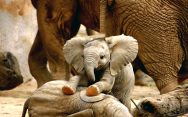
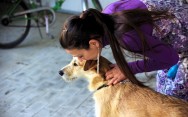
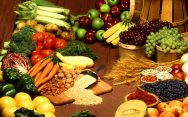
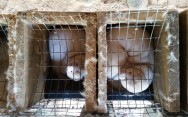
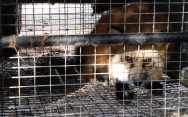

Social Media